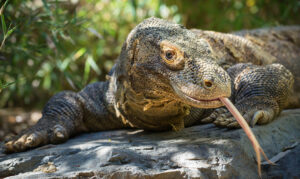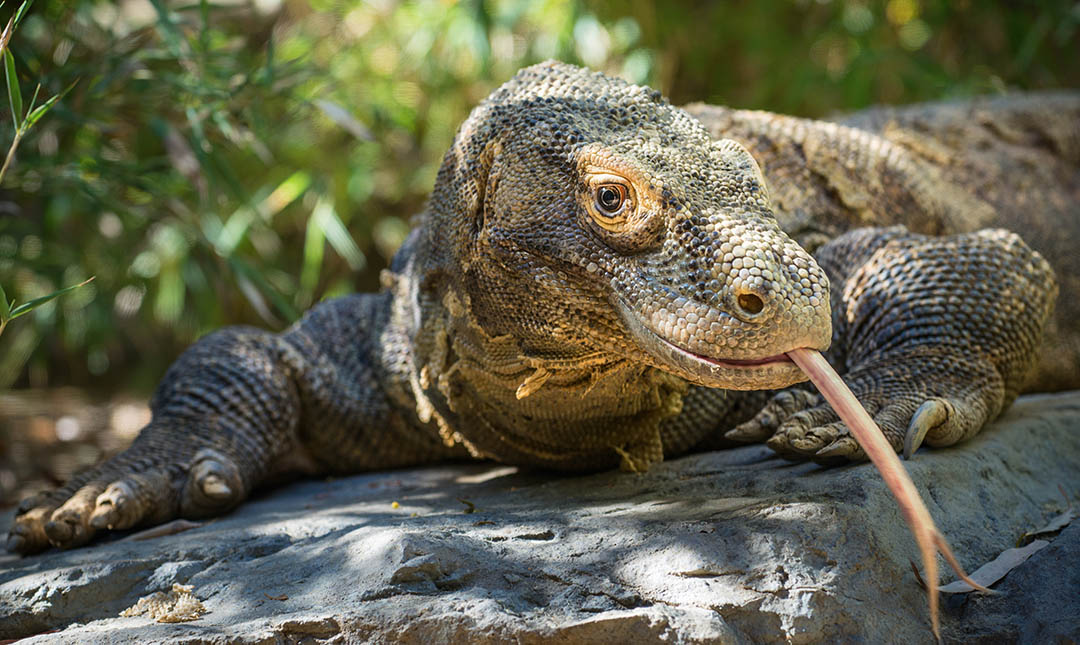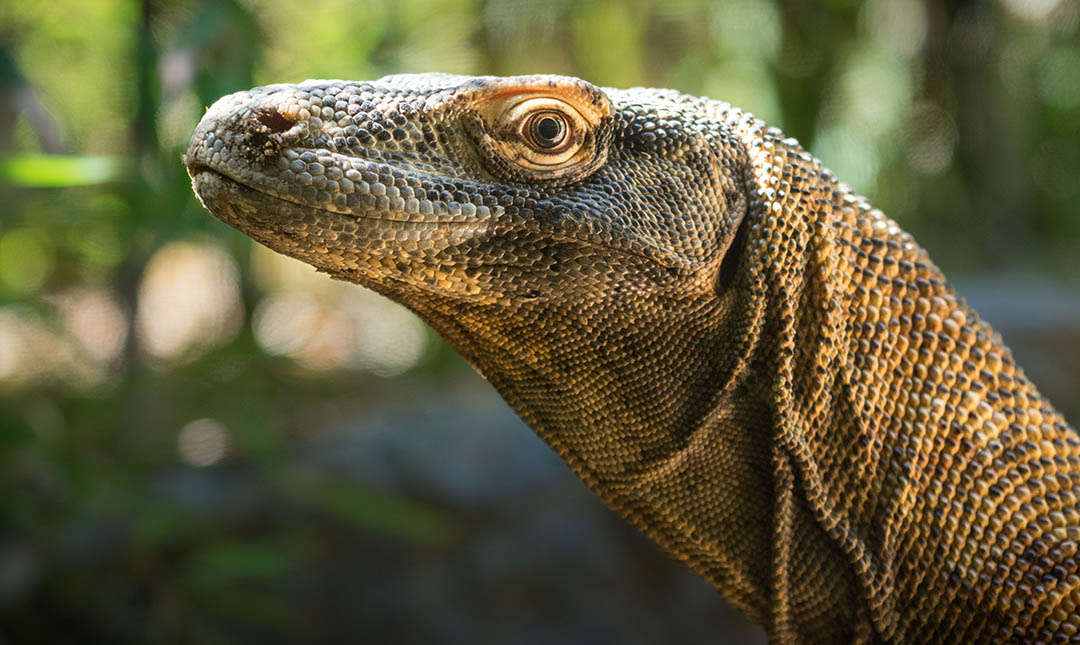About
The Komodo monitor lizard is more popularly known as the Komodo dragon. The world’s largest lizard, it has a reputation for having a deadly bite. Because their diet includes the decaying flesh of dead animals called carrion, their saliva may harbor more than 50 different pathogens, including E. coli bacteria. When a Komodo bites its prey, the bacteria in its saliva will kill the prey within a few days, and its powerful sense of smell can locate the dead body up to several miles away. Komodo’s are immune to the bacteria in their saliva because chemicals and proteins in their blood act as natural antibiotics. When under human care with controlled diets, their saliva seems to lose most of the infectious pathogens entirely.
Komodo dragons sometimes go for weeks without eating, so when they find food, these lizards can consume up to 80 percent of their body weight in one sitting. A Komodo has about 60 sharp, serrated teeth that are easily broken and continuously replaced like a shark’s. They use their teeth to tear their prey into sections and then swallow without chewing. Komodo dragons are also cannibalistic and their young will climb trees to avoid becoming the next meal. Komodos can run in short bursts up to 12 miles per hour and are strong swimmers, easily swimming to neighboring islands in search of food.


Habitat
Komodo dragons on a few small islands in Indonesia, including Komodo Island, a protected wildlife preserve.
Diet
The bulk of this carnivore’s diet consists of carrion and large mammals such as deer, pigs, goats, dogs, horses, and water buffalo. They also eat smaller meals like snakes, lizards, and reptile and bird eggs.
Physical Characteristics
A Komodo dragon can grow up to 10 feet long and weigh between 150 to 200 pounds.
LOCATION WITHIN THE ZOO
You’ll find this animal in Dragons of Komodo in the Australia section. See Zoo Map.


